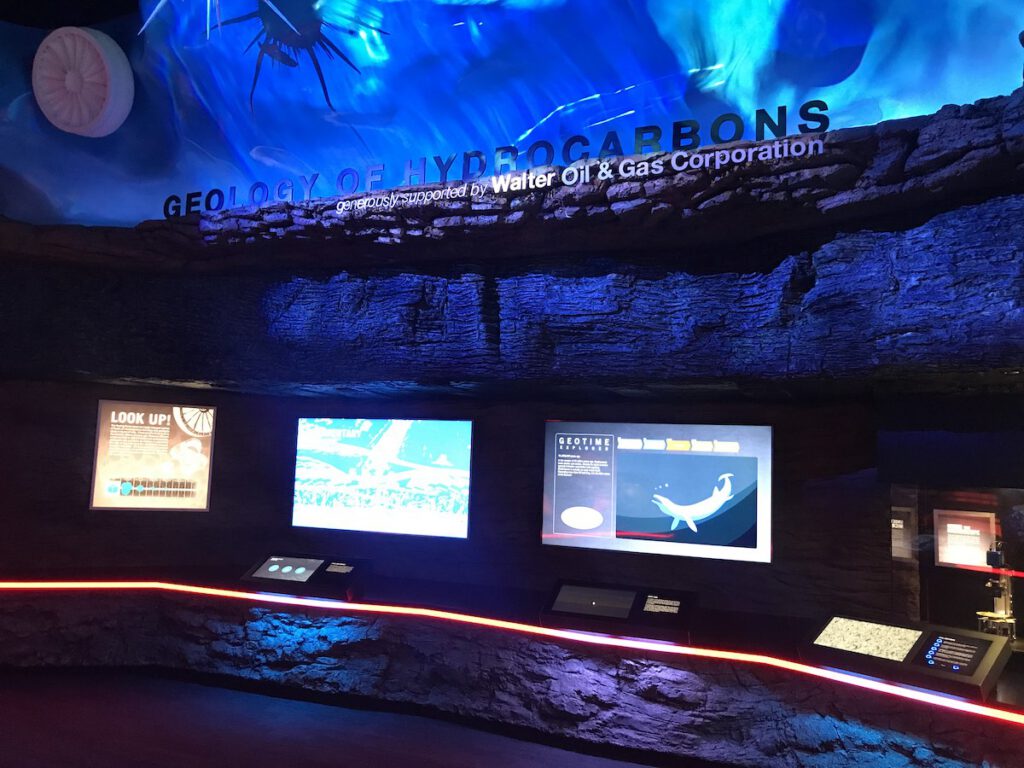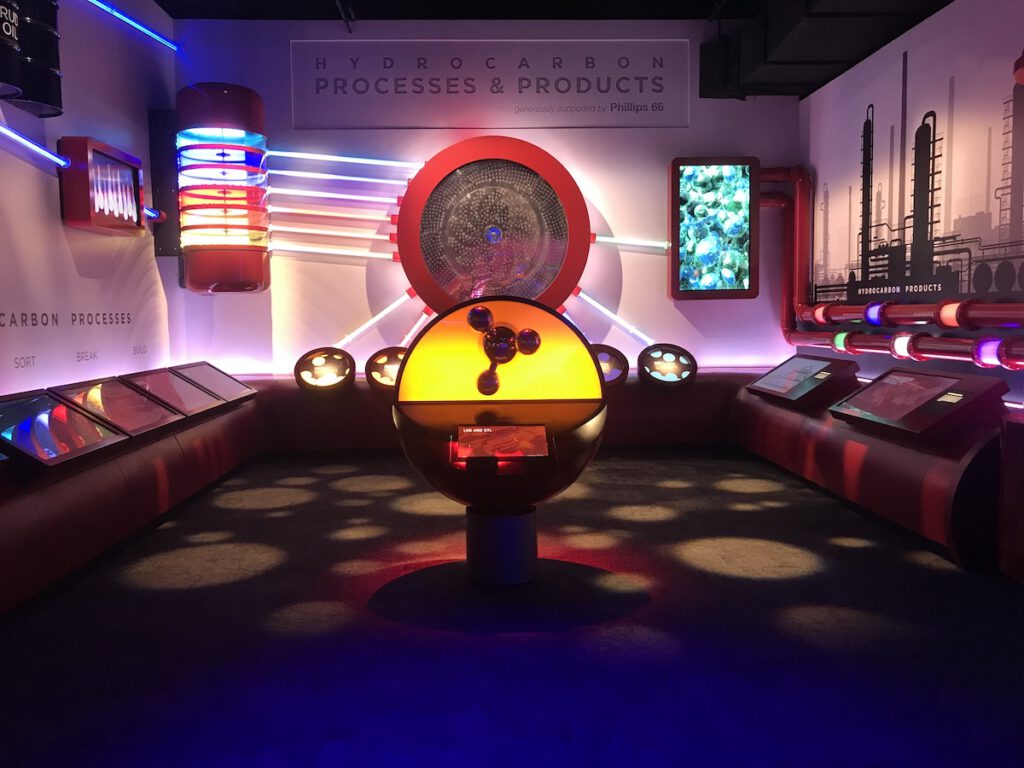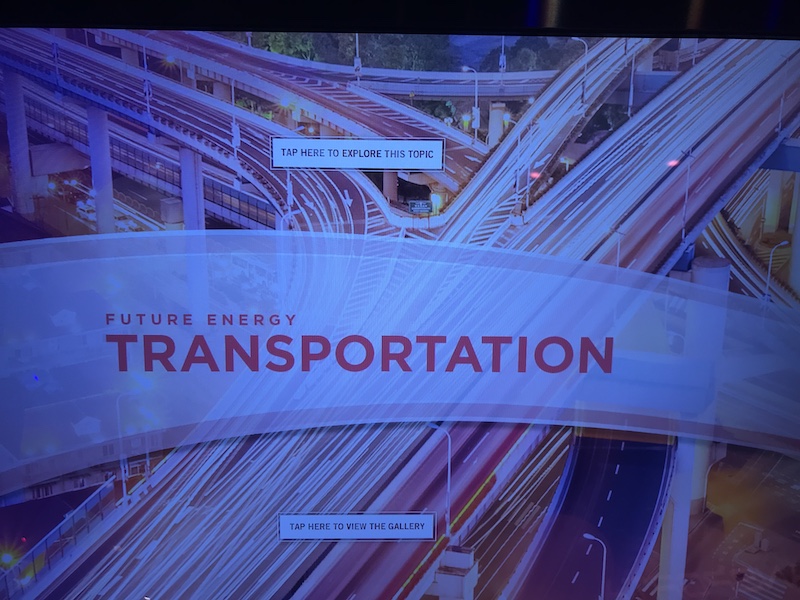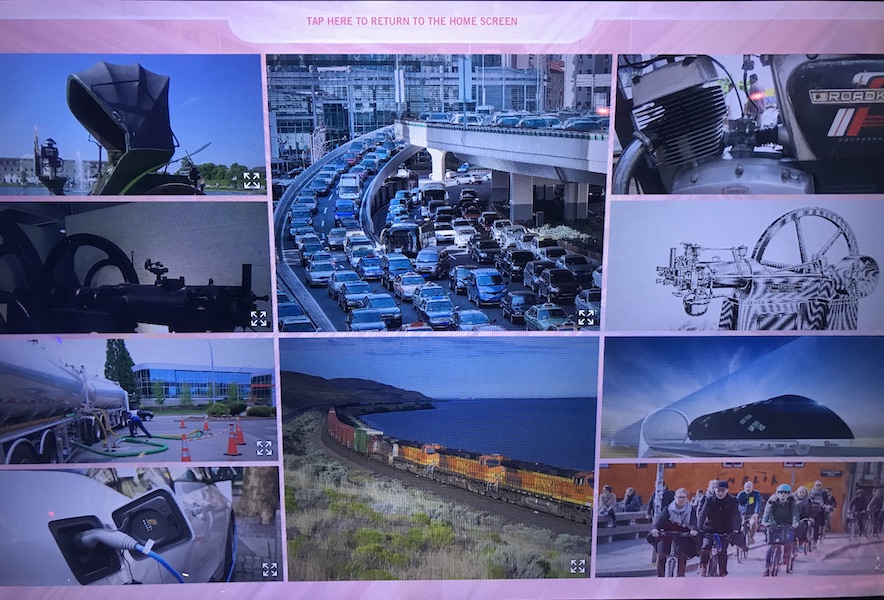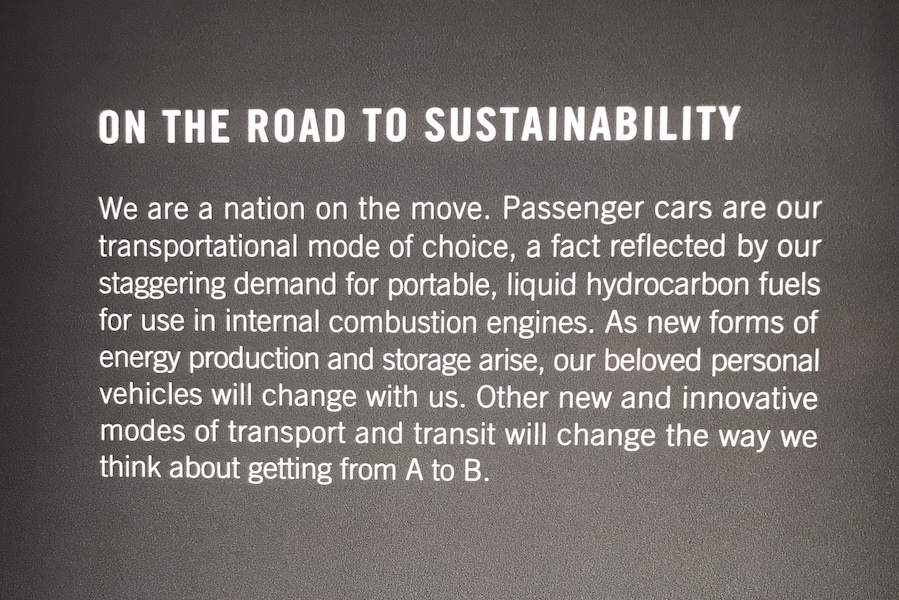a visit to the Wiess Energy Hall at the Houston Museum of Natural Science (HMNS)

All images and videos in this post by alexclose.
Visiting the ‘Petro Metro’ on invitation by Popup Goethe’s director Grant Aymond, I get the chance to meet Daniel Minisini in person. He is a geologist working for Shell, and in his spare time he hosts an interview series at the local free radio station KPFT Houston directed mainly at the geologists and oil engineers working in Houston. [But via his Youtube Channel also to critical petromodernity researcher all over the world.] In the beginning of 2021 he had interviewed Benjamin and me via zoom.
link to background information on minigeology on Rice University Website
When Daniel heard of my planned trip to Houston, he suggested a couple of places that I should definitely visit, among them the Wiess Energy Hall at the HMNS. The department, which has been completely remade for the bargain price of 42 Mio US$ and reopened in 2018, is dedicated to the physical aspects of a phenomenon that carries metaphysical proportions: energy, and its live-creating, live-sustaining powers.
In Houston, the world capital of oil, this comes down to a narrative almost thoroughly dedicated to the geological, technological, and—to some extent—social aspects of the exploration, production, refinement and consumption of petroleum.
The line-up of sponsors is a who-is-who of the oil business:
One can go down into the depths of the earth inside an enlarged, space capsule-like drillhead until striking oil. It feels like inside a shaky elevator with an overdimensional floor display:
Almost the same scenario is offered a second time, this time we travel horizontally over the land near Houston, than underneath it, in a spaceship-like fracking device:

Mentions of the problematic aspects of tough, unvonventional oil, about the damages done and the civil protests? None. The exhibition is a celebration of the achievements and perspectives of the “unconventional revolution” (as Daniel told me, the technologies of fracking and the like are referred to within the industry).
Oh, wait a second, here’s a critical passage dedicated to the possibility that it might be necessary in the future to step away from fossils towards other fuels:

Remarkable, though, that the striking argument is purely financial.
A whole panorama in the best tradition of the “Futurama” commissioned by General Motors for the 1939 World’s Fair “The World of Tomorrow” in New York City is dedicated to future energy city (supported by Chevron). But it was closed for maintenance, I could only take a glimpse from the side.
It’s not hard to find professional coverage of this feat on the internet, though, for instance here, on the Museum’s Website.
After a lunch presentation of our work with Beauty of Oil I gave the next day at the architecture faculty hall of Rice University, a distinguished professor and member of the RDA (Rice Design Alliance) asked me, what i would answer to the critique that we have just changed the pictures within but not the museum itself with our OIL-exhibition at Kunstmuseum Wolfsburg. Given, that I had not seen a hint of a critical reflection of the oil legacy in all the impressing, shiny, and flashy museum landscape of Houston (with absolutely fantastic ensembles as the Cy Twombly Gallery in the Menil Collection and other top rate shows and collections dedicated mainly to classic modernity—meaning, the heydays of petromodernity), and also given, that I did get no answer whatsoever to my questions for an official critical discourse on petromodernity in the artworld or elsewhere from my academic audience at Rice, this fundamental critique seemed to be rather odd.


